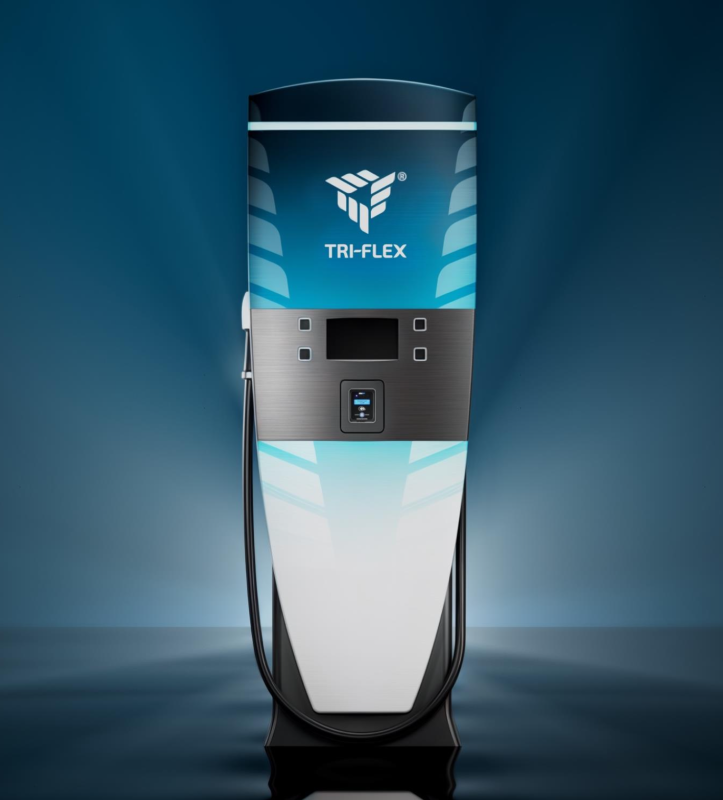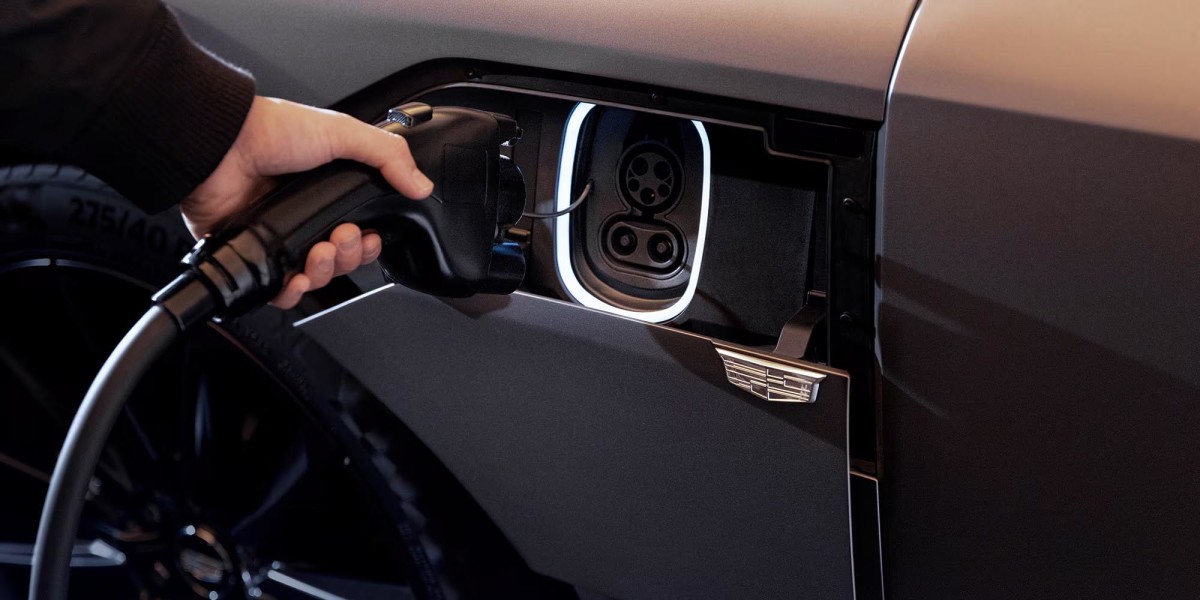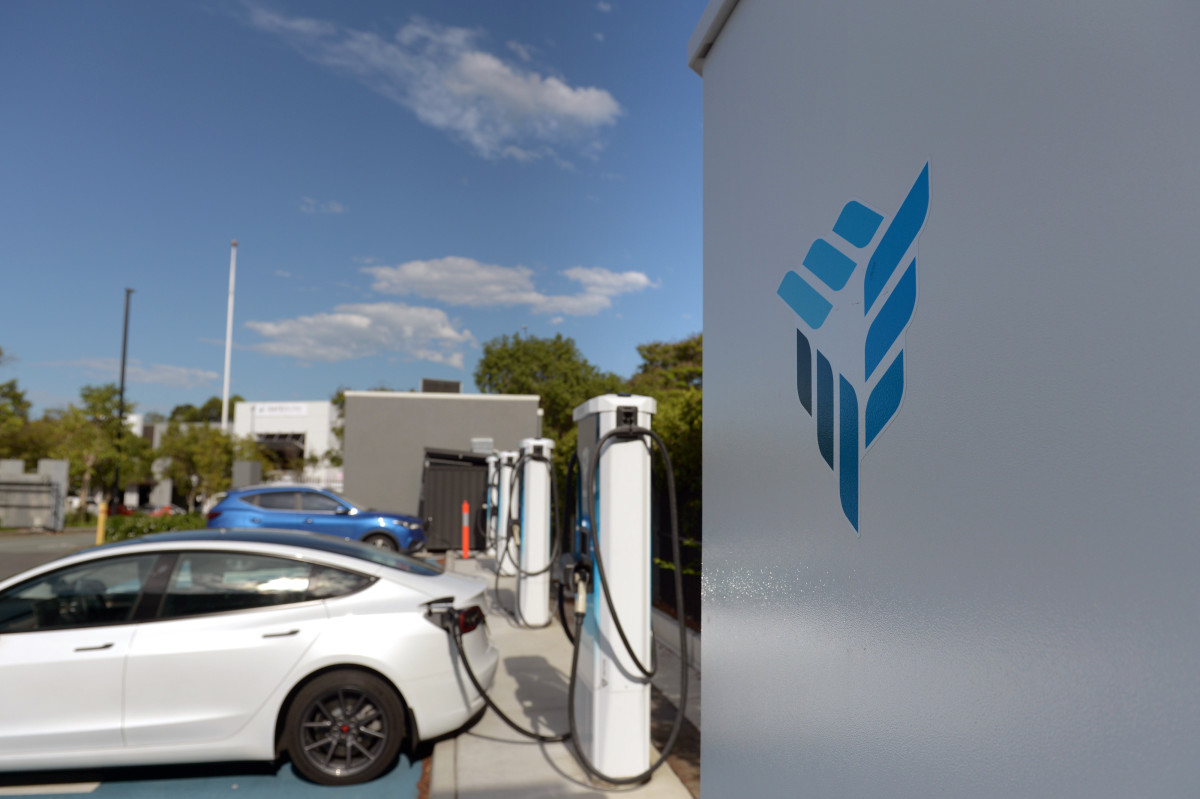Tritium is addressing a lingering question in the EV world
Tritium—a leading producer of DC fast chargers for electric vehicles (EVs), has unveiled a new system that facilitates growth for public charging sites and fleet operators without traditionally significant infrastructure expansion costs. The charging platform, TRI-FLEX, allows operators to easily scale from four up to 64 charge points without replacing their initial investment. TRI-FLEX includes a power conversion system offering from 400kW to 1.6MW of AC power and up to 3.2MW of DC power. One hub can power two to 32 TRI-FLEX dispensers or up to 64 charge points—eight times the amount of conventional systems.

Tritium
The platform’s design flexibility helps site owners blend 100kW, 200kW, and 400kW dispensers in a single system to match passenger cars and commercial vehicles, and it’s designed to be reliable in extreme climates that have traditionally posed challenges for EV charging. TRI-FLEX also contains a 25kW power resolution with real-time load balancing for optimal efficiency and throughput. The CEO of Tritium, Arcady Sosinov, told Autoblog in more detail how TRI-FLEX achieves these goals, the system’s unique market position, and how customers sustain the platform amid EV expansion.
How TRI-FLEX beats extreme heat or cold
When asked what measures Tritium has taken to remain reliable in harsh environmental conditions like extremely hot or cold weather, Sosinov said: “Environmental conditions are one of the biggest causes of reliability issues in charging infrastructure, and what this company pioneered in the earliest days, and is continuing today, is a fully-sealed technology. It’s called the IP65 ceiling. It’s a military-grade level ceiling of the unit, so no contaminants, no water, and no dust ingress of any sort can come into the unit. We can do that because we fully liquid-cooled all of our technology.” Sosinov compared this process to using liquid cooling for processors when building computers instead of air cooling for more efficiency. He added that TRI-FLEX can operate in temperatures from arctic cold to desert heat.

Cadillac
TRI-FLEX adopts a unique approach to integrate diverse energy sources
During the interview, Sosinov highlighted TRI-FLEX’s ability to integrate with diverse energy sources, which he considers “the coolest part” of the platform. Sosinov noted that TRI-FLEX splits up AC and DC conversion into two separate modules in the power modules, whereas most companies would typically integrate them into one power module.
He added: “That design choice allows us to effectively create a DC microgrid.” With this DC microgrid, charge operators can: “Integrate any DC source or use in the system. Battery storage, solar, I’ve actually seen natural gas generators in some cases, fully integrated on the DC side of things, which means that those DC technologies don’t hit the grid. The biggest problem with integrating these renewable technologies is that you have to get them permitted to hit the grid, like solar in your house, for example, but if you can keep them all in a microgrid, not impacting the utility side of things, you can integrate anything you want.”
Tritium’s CEO talks cybersecurity measures
Given the increasing connectivity of EV chargers, I asked Sosinov what steps Tritium is taking to protect against cybersecurity threats and ensure user data remains private. The CEO explained: “We actually have a cybersecurity engineer whose sole job is to manage cybersecurity on the charging infrastructure.” Sosinov noted that Tritium uses a cybersecurity framework called ISO 27001, which is the high-level framework that most companies in information security use to lock down their systems. He also highlighted that in addition to the general cybersecurity framework, the company can also work toward meeting more specific security requirements for its customers. Tritium’s work with essentially all of the largest global charge point operators, including BP and IONITY, on top of its general framework compliance that requires continual adaptation, ultimately makes Sosinov comfortable with managing cybersecurity risks.

Getty
How TRI-FLEX customers sustain the system
When asked how Tritium is investing in workforce development and training to have enough technicians to install, maintain, and service TRI-FLEX systems as adoption scales, Sosinov said: “In almost every case, it’s the customer’s responsibility for dispatching people to [the] site. So it’s their service providers now. Why is it not our service providers? For large operators like BP and Shell, they’re used to having their own technicians. For fuel pumps, for HVAC in the store, [or] for whatever else that happens on their sites, they’re used to having their own dedicated technicians who’ve gone through their own safety trainings, and they prefer to continue using that. So they don’t want every single time to have to qualify a new technician from Tritium, or from anybody else. So, we work within that construct. What we are responsible for is providing them training and documentation.” Sosinov added that Tritium is also responsible for resolving customer tickets, which is a remote solution, and the company can dispatch spare parts to customers if needed.

Tritium
Final thoughts
Tritium’s approach with its new TRI-FLEX system is significant since it can scale one hub up to 64 charge points in a cost-efficient manner. Most systems today cap at eight charging points per power cabinet, and when site owners want to expand, they face steep costs, which are compounded by the need to serve different vehicle types, from passenger cars to commercial trucks. While at a slightly slower pace than previous years, EV adoption is increasing within the United States, and government mandates promoting electric driving underscore the call for adaptable and sustainable charging solutions—a requirement that TRI-FLEX is designed to fill. Tritium’s solution appears especially valuable with its ability to help charging operators scale as demand increases without replacing their initial investment.